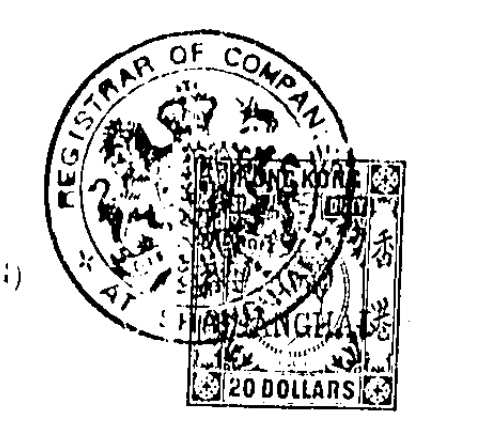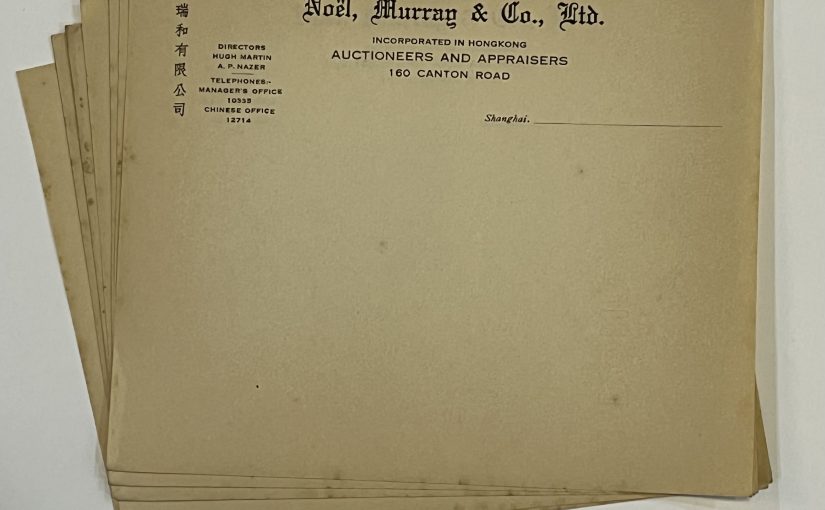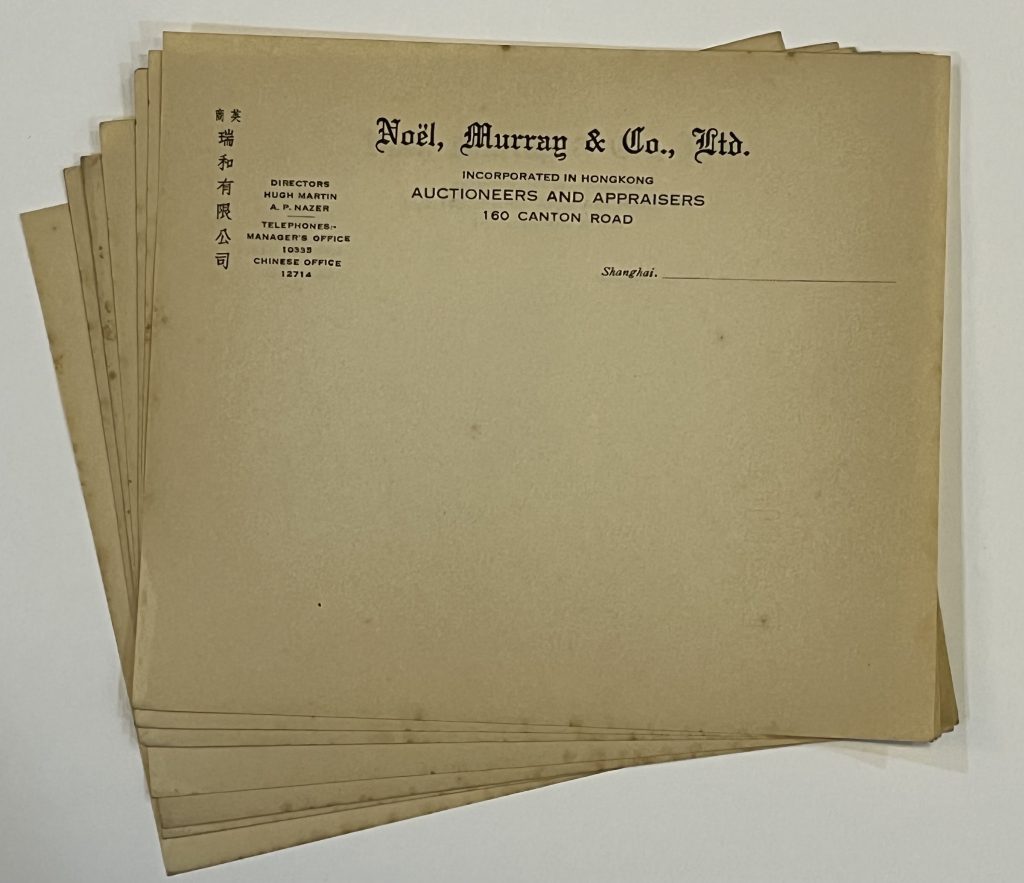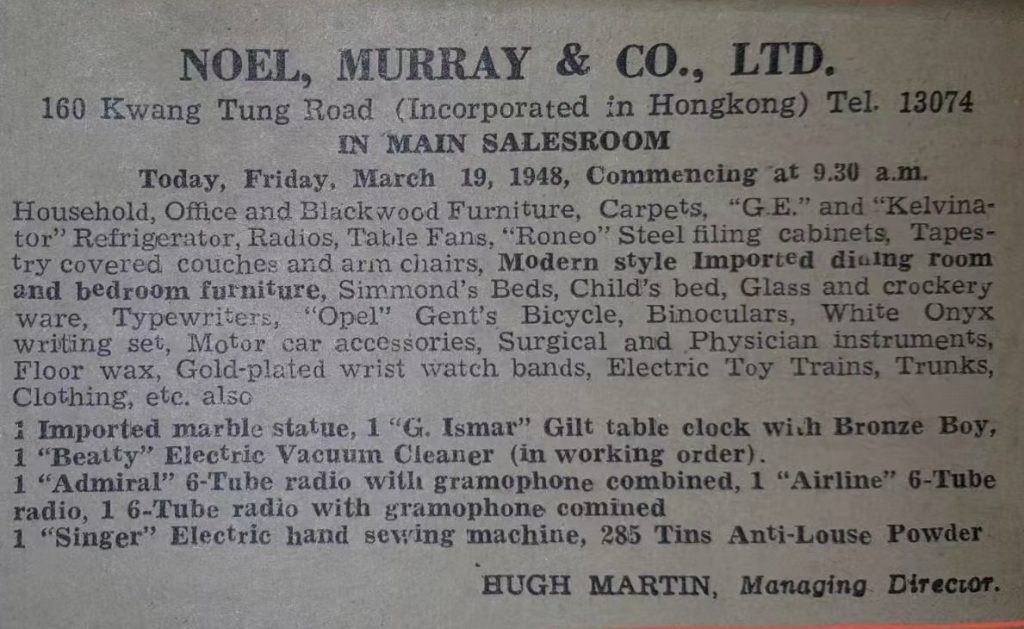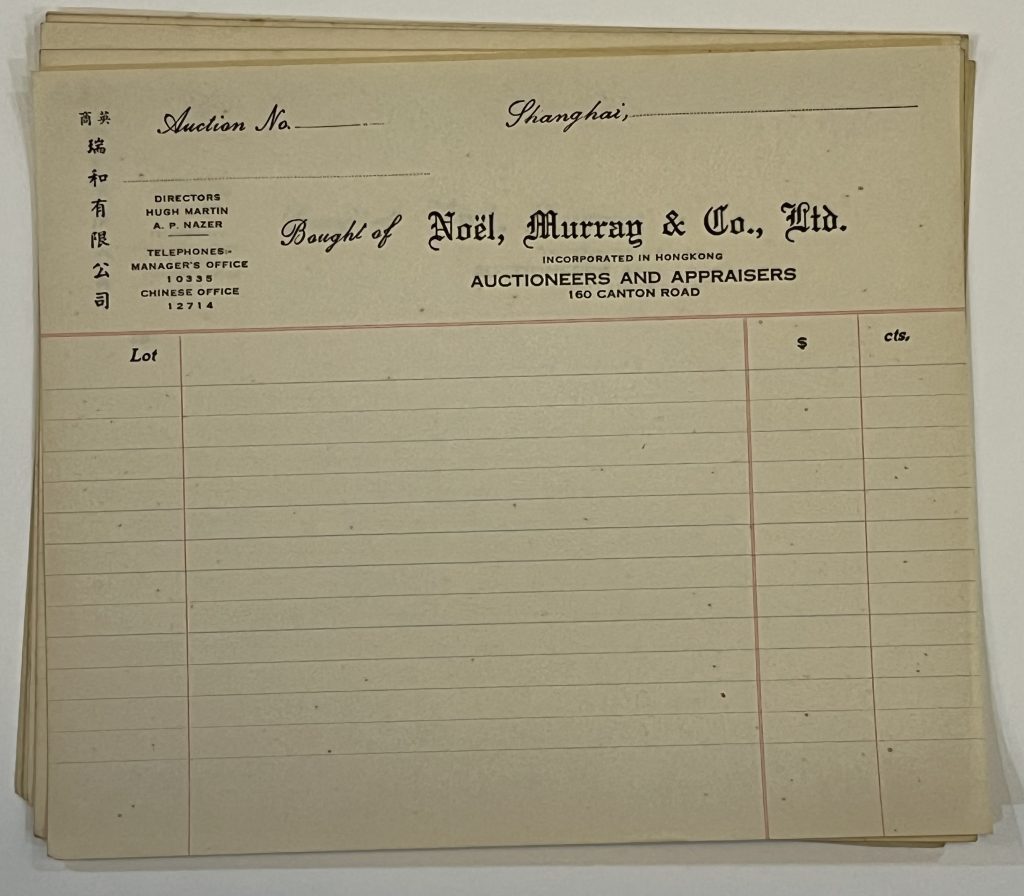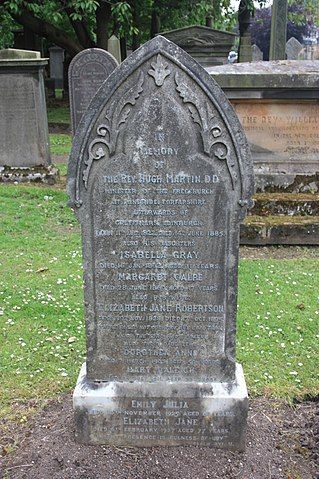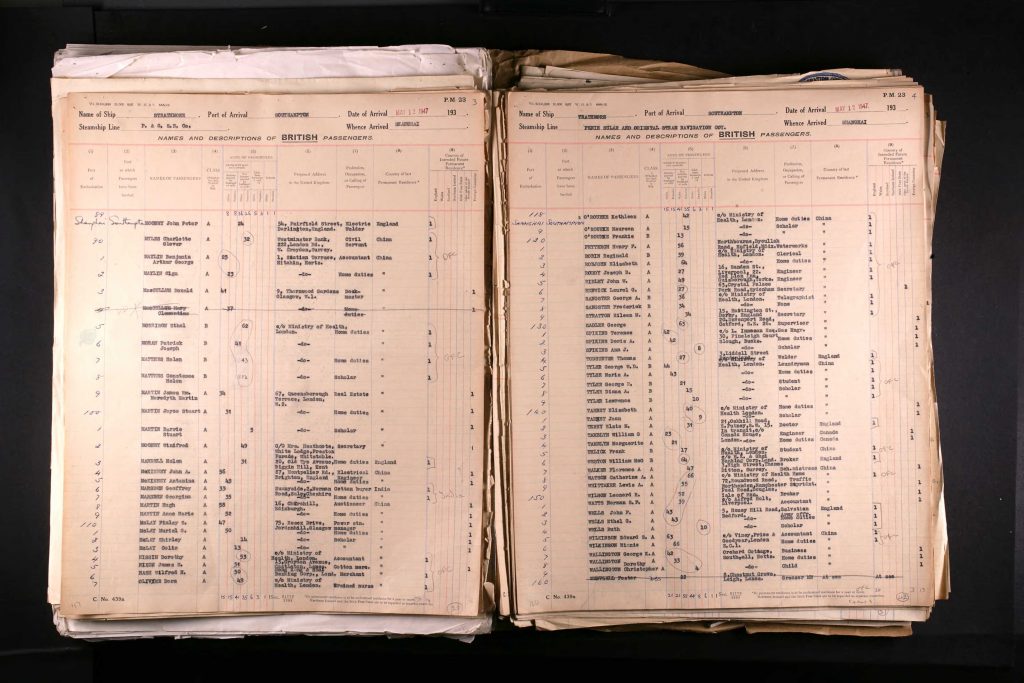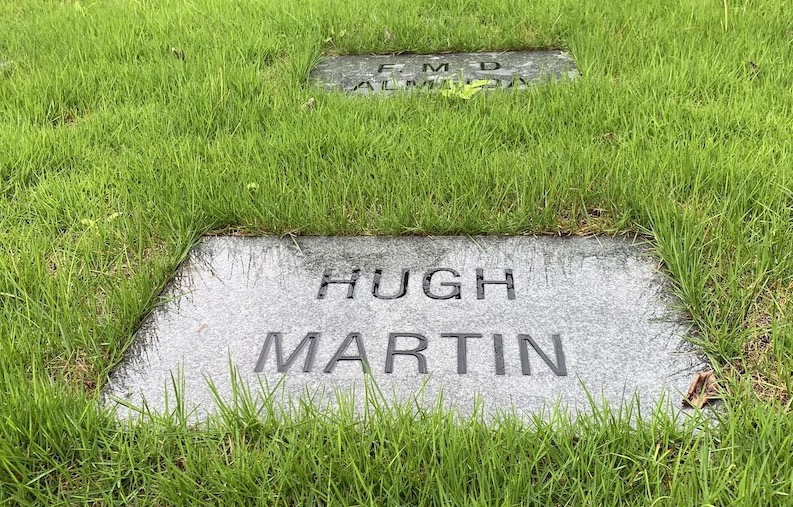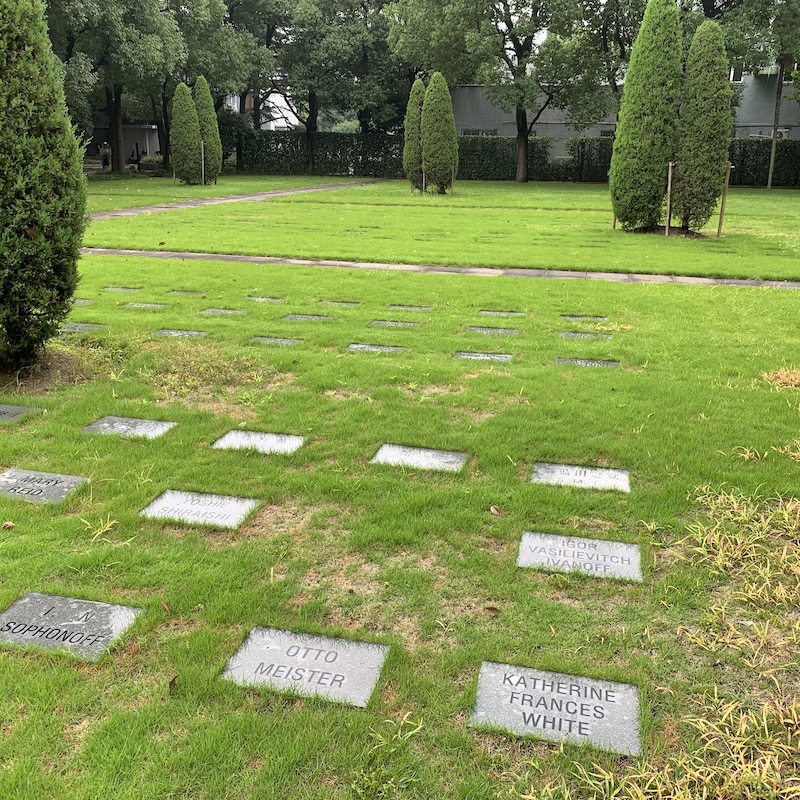This is the 5th post about Hugh Martin in Shanghai. The first post of the thread is “Hugh Martin’s grave in Shanghai“.
After having published latest post on Hugh Martin, “Letter from Hugh Martin“, a lawyer friend in Hong Kong offered to find the corporate registration file of “Noel, Murray & Co Ltd” in Hong Kong, 瑞和有限公司 in Chinese. This prove to be a very valuable source of information about the company and Hugh Martin, including a copy of his actual signature.
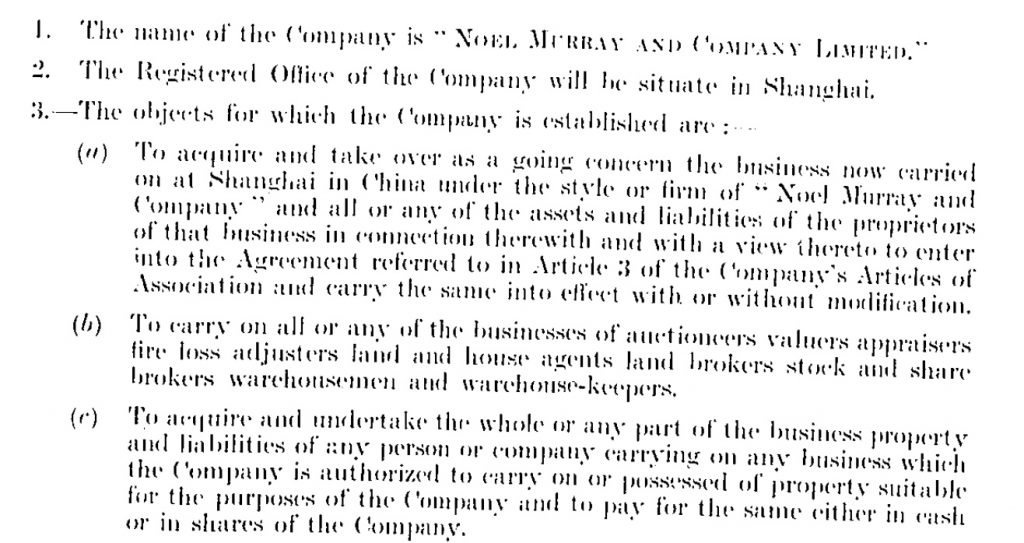
In the incorporation documents from 1938, it is very clearly stated that the new company in Hong Kong will take over the activity and business of Noel, Murray and Company carried on in Shanghai. This was only a change in the legal set up, as “The Registered Office of the Company will be situated in Shanghai”. The change took place in 1938, about 1 year after the invasion of Shanghai by the Japanese forces. At that time, the International Settlement where Noel, Murray & Co operated was surrounded by the Japanses forces with part of the International Settlement actually occupied by the Japanese forces. The French Concession, where Hugh Martin lived was under the same circumstances. The situation in Shanghai was extremely tensed and would become even worse in the years later. Moving the business to the British colony of Hong Kong was surely a protective move.
Although, the new company was registered in Hong Kong, Hugh Martin and his partners did not have to go in person. The incorporation process was conducted by their law firm, Platt, White-Cooper & Co, 83 Peking Road, Shanghai. The actual sollicitor was Header Harris, a British lawyet at this firm. Documents where submitted at the British Consulate for certification on 21st April 1938.

The directors were among the shareholders. Hugh Martin, AP Nazer and John Lanson a Chinese person who was probably the comprador of the company at that time. Hugh Martin and AP Nazer list their adress as 160 Canton Road, the registered office of Noel Murray & Co Ltd.

There were 5 shareholders, Hugh Martin and John Lanson held 24% each, with AP Nazer holding 2%. 2 other Chinese people held 40% and 10%, no information is available about them.
Since Hugh Martin was the managing director of the company, he signed the incorporation documents so I could get a real picture of his signature. The incoporation files also contained a copy of the company letter head paper, which is exactly like the one in post “Letter from Hugh Martin“, so these papers must be from 1938.
The company was closed down in 1952 by Hong Kong authorities as they did not receive answer on several legal requests. It probably had not more activity by then, as Hugh Martin had gone back to the UK in 1947. In 1949, the Chinese Communist party took control of China and foreign companies started to disappear quickly. Noel, Murray and Co had surely no more business in Shanghai by then and they did not not seem to have started an actual business in Hong Kong to replace it.
This is the 5th post about Hugh Martin and Noel, Murray & Co in Shanghai. To read the thread from the beginning, go to post “Hugh Martin grave in Shanghai“.
